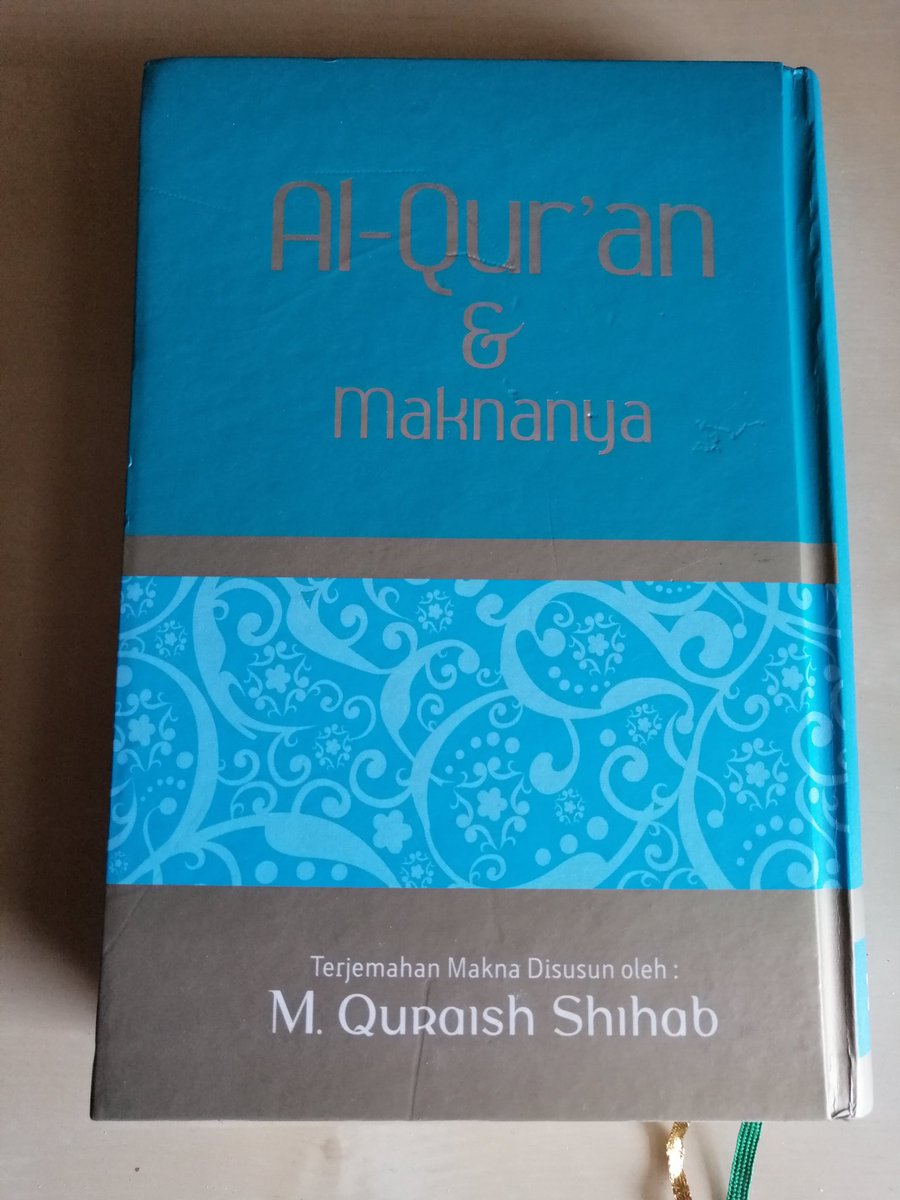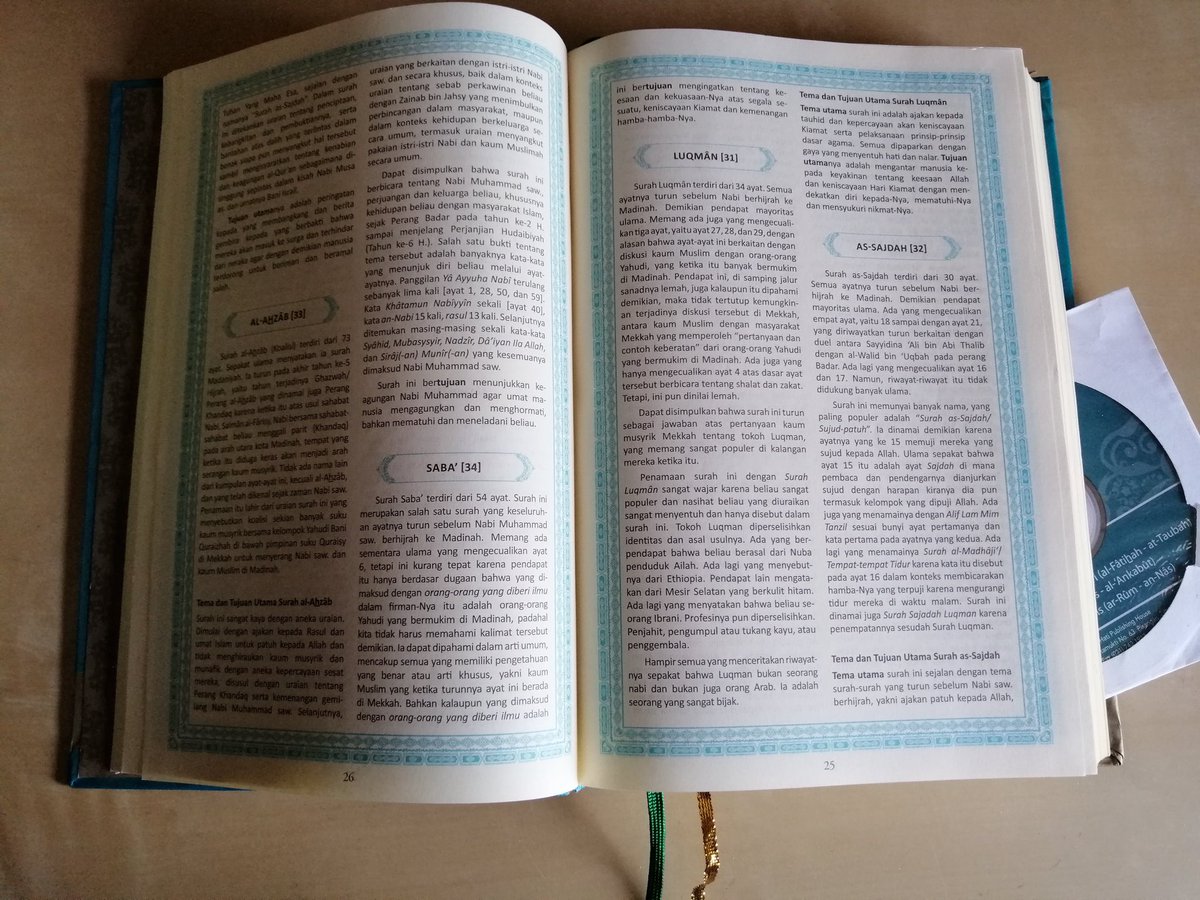
Recently, the Ahmadiyya Muslim Jamaat has published a new revised German translation of the Qur’an titled ‘Der Heilige Qur’an’. In this post, I will take a close look at this new edition and discuss some of the things that have been changed. #qurantranslationoftheweek 🌍🇩🇪 

The Ahmadiyya Movement has been translating the Qur’an into different languages for more than 100 years, with the goal of making the meaning of the Qur’an accessible in all languages of the world.
The community began translating the Qur’an into European languages as early as the beginning of the twentieth century. The main impetus behind this endeavour was the aspirations of Mirzā Ghulām Aḥmad (d. 1908), the founder of the Ahmadiyya movement.
After establishing the community in 1889, he declared shortly afterwards that he had received the divine revelation that he was the second coming of the Messiah. According to him, God had entrusted him with spreading the teachings of Islam in Europe.
Soon after, he expressed the desire to produce Qur’an translations in European languages in order to preach the message of Islam more efficiently in the West. The first translations of the movement appeared in the early twentieth century, initially in Urdu and English.
In 1914, a conflict arose in the Ahmadiyya Movement over the successorship of Mirzā Ghulām Aḥmad. The conflict revolved around the question of whether a single person (a caliph) should lead the community or a committee (ṣadr anjuman).
The majority remained loyal to the caliphate, and this branch is today known as the Ahmadiyya Muslim Jamaat (AMJ). Members who wanted to see a committee heading the movement established a new branch that is today known as Ahmadiyya Anjuman Isha’at-e-Islam Lahore (AAIIL).
After the split, both branches produced Qur’an translations independently. The present German translation was published by the Ahmadiyya Muslim Jamaat for the first time in 1954, and was prepared by scholars of the community in cooperation with Berlitz Verlag.
Since then, the translation has been revised several times. However, although several editions have been published since 1989, a thorough revision has been pending since then. Plans for this revision did not become concrete until 2012, …
… when a committee of scholars from the community was appointed to give the translation a complete overhaul. The committee spent five years working on the new edition, with the remaining four years dedicated to layout and proofreading.
Below I will discuss some features of the new edition: The layout is mostly unchanged. The translation is divided into two columns, with the Arabic script on the right hand side and the translation on the left hand side.
However, the new edition uses a different Arabic font, which makes it easier for the reader to engage with the Arabic text. Moreover, the translation of the names of the chapters (sūrahs) are also given in the new edition. 



The explanatory notes are no longer given in the appendix, but appear in footnotes. A glossary has been created to explain Arabic terms. Furthermore, the new edition contains an index, which enables the reader to find verses on specific topics more quickly.
Meanwhile, the verse count has remained the same. In every sūrah – with the exception of Sūrat al-Tawba – the bismillah is counted as the first verse. Thus, for example, ‘Alif Lām Mīm’ is not the first but the second verse of Sūrat al-Baqara.
In the introduction, the editor lists a number of reasons why it was considered necessary to publish a thoroughly revised translation. First, the German language has changed over time. The older edition used rather archaic terms that no longer resonate with today’s readers.
Q 49:13 was translated in the earlier translation as ‘O you people, We have created you from male (German: “Mann”) and female (“Weib”) ...’ However, the new translation takes the following approach: ‘O you people, We have created you from male (“Mann”) and female (“Frau) …’
Thus, the content of the verse has not been changed, but the term ‘Weib’, which sounds rather archaic, has been replaced by ‘Frau’. In addition, the old edition contained some verses that were not clearly translated. For example, Q 4:29 was translated as follows:
‘O you who believe, do not consume your possessions among yourselves by falsehood (“Falschheit”) ...’ The new translation chooses a clearer wording: ‘O you who believe, do not consume your possessions among yourselves by deception (“Betrug”) …’
The publisher states that the new edition of the translation is more closely aligned with the ‘Tafsīr-i ṣaghīr’. ‘Tafsīr-i ṣaghīr’ is an Urdu translation authored by the second caliph of the AMJ Mīrzā Bashīr ad-Dīn Maḥmūd Aḥmad (d. 1965).
An example of this is the arrangement of the ‘ḥurūf al-muqaṭṭaʿāt’ (‘the disconnected letters’). Traditionally, translations of the Ahmadiyya Movement include an explanation of the ‘ḥurūf al-muqaṭṭaʿāt’.
In the previous edition of the German translation, a possible meaning of these letters was presented in the footnotes. In contrast, the new edition follows the ‘Tafsīr-i ṣaghīr’, placing the interpretation of these letters directly in the translation text.
For example, Q 2:1 is rendered as follows: ‘Alif Lām Mīm: I am Allah, the All-Knowing’ (‘Ich bin Allah, der Allwissende’). A footnote directs the reader to the glossary, where the letters have been discussed in more detail. 

Furthermore, the glossary covers topics such as ‘zakāt’ and ‘ḥajj’. Topics that might interest the Muslim reader, such as the jinn, Gog and Magog, and the identity of Dhū l-Qarnayn, are also discussed in the glossary. 

In 1954, with the first edition of their German translation, the Ahmadiyya Muslim Jamaat intended to rectify certain misconceptions held by Europeans. It was hence directed primarily at a non-Muslim readership.
However, the revision of the Arabic text and the addition of a glossary and an index suggest that the present edition is intended to appeal to a wider audience: In addition to non-Muslims, the edition also aims to attract Muslim readers. #qurantranslationoftheweek
~ KK ~
~ KK ~
• • •
Missing some Tweet in this thread? You can try to
force a refresh











